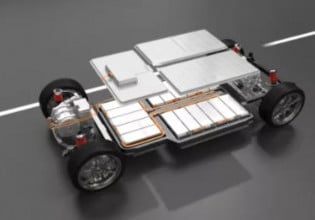The Plenary session at Darnell’s Power Forum in Chicago yesterday identified major disruptions for the power conversion industry ranging from new materials to new and increasingly-complex power system architectures. Presenters included Alex Lidow, CEO of Efficient Power Corporation, Henrik Zessin, Manager from Fraunhofer Institute, Chris Young, Senior Manager from Intersil Zilker Labs and Randy Malik, Senior Member Technical Staff with IBM.
Pointing toward lower-cost and higher-performance switching transistors, Alex Lidow predicted that EPC’s enhancement-mode eGaN transistors will cost less than comparable silicon power MOSFETs by 2015. He discussed the effort to develop dedicated wafer processing equipment specifically for GaN transistors that will lead to lower device costs.
Lidow also presented specific drive circuits that can optimize the performance of eGaN transistors. These new devices require a drive of 5V to become fully enhanced (on), but suffer damage if the gate drive rises above 6V. That narrow band requires special drive circuits that can only be implemented with discrete components. Lidow indicated that driver ICs designed to meet the specific needs of eGaN devices are expected to be available in 2011.
Henrik Zessin discussed new adaptive power management techniques being developed to enable wide-spread use of various energy harvesting technologies. One specific circuit was presented to maximize the energy captured from thermal electric generators (TEG). The output voltage of TEGs switches between positive and negative depending on the thermal gradient (falling or rising temperatures).
The TEG converter proposed by Zessin included an automatic polarity detector that reconfigures the input of the converter between positive and negative as demanded by the TEG operating conditions. The prototype operated down to voltages as low as 150mV input and had a voltage drop of 40mV upon start up, falling to 5mV under normal operation.
Zilker Intersil’s Chris Young shared a vision of the future of digital power that includes three major trends: the commoditization of digital power ICs, development of differentiated applilcation-specific digital power ICs and the continued integration of additional functions into digital power ICs.
Young sees integration occurring in two ways. First, there will be the development of digitally-controlled power supply on chip devices where passives are integrated with the digital controller and power devices. Second, he expects to see digital power integrated directly into ASICs, FPGAs and microprocessors.
In the final paper of the morning, IBM’s Malik presented a vision of the future of servers where each core in a multi-core processor is individually powered. He predicted over 100 individual dc-dc converters for each microprocessor, all turned on and off at the command of a complex and comprehensive power management system. In his analysis, this new power architecture could save up to 40% of the energy currently consumed by servers. IBM is no longer looking for incremental improvements in converter efficiencies, they are already over 90%, the company is working to develop a "game changing" new power architecture.






